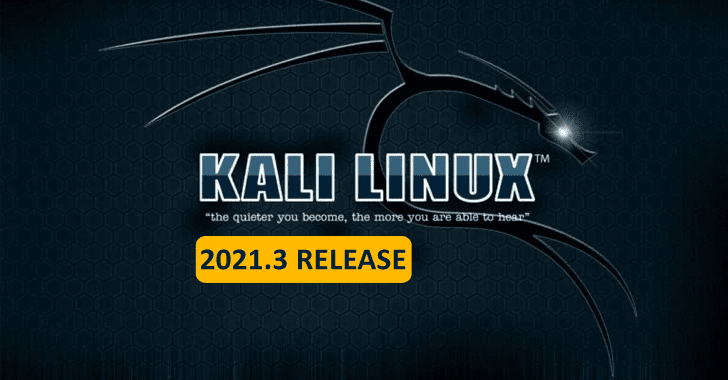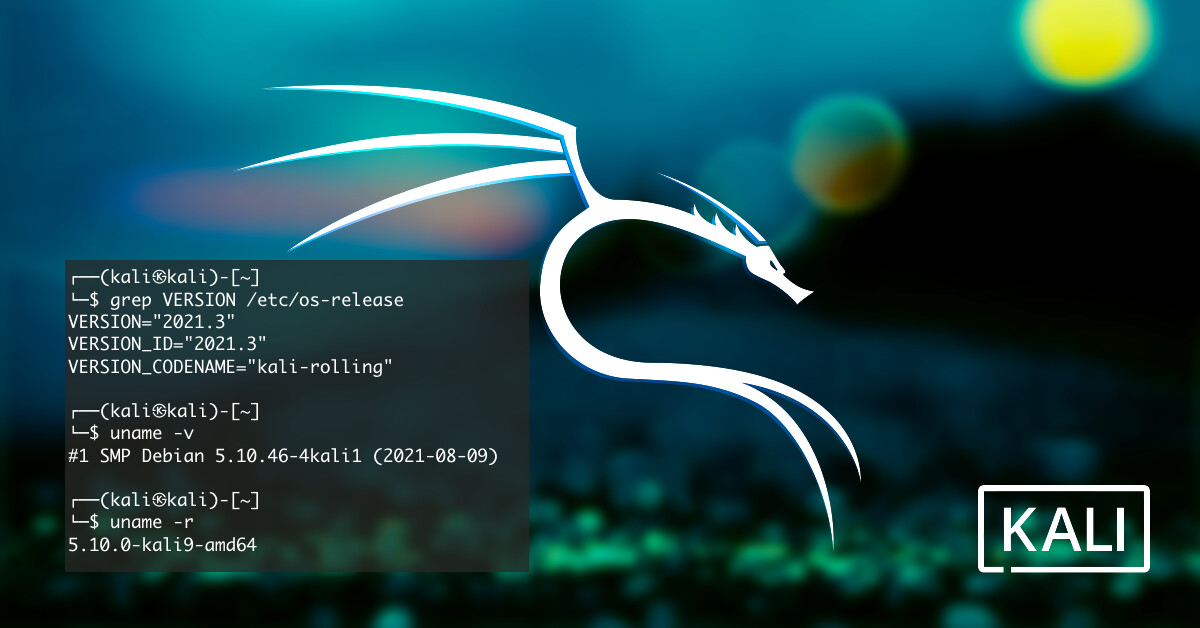Kali Linux 2021.3 Releases A New Version That Brings New Penetration Testing Tools And Other Improvements

Kali Linux 2021.3 Releases A New Version That Brings New Penetration Testing Tools And Other Improvements
Kali Linux is an operating system designed specifically for network security practitioners and white hat hackers. The system can be used to perform penetration testing and security audits. Kali Linux has now released version 2021.3, which brings a number of new tools, improved virtualization support, and a new OpenSSL configuration.
The latest version of Kali Linux ISO image download address: http://cdimage.kali.org/kali-2021.3/
For the complete release log, please visit: https://www.kali.org/blog/kali-linux-2021-3-release/

The new version has the following improvements:
In this version, OpenSSL provides wider compatibility by default. The compatibility here refers to compatibility with the old version. The specific reasons will be explained later.
New Kali-Tools site tool: This tool has been completely updated
Better virtualization support in real-time imaging sessions: By default, users can directly drag and drop files from the host to copy or paste them into the Kali VM virtual machine.
The new tool can help users simulate adversary attacks to domain takeover or WiFi attacks.
KDE 5.21 version: The plasma-desktop version has been upgraded.
The insecure TLS 1.0/1.1 protocol is enabled by default:
Whether it is Windows or iOS, Android, or most Linux distributions, TLS 1.0 and 1.1 are disabled by default, because these protocols are no longer secure, including SSL 3.0, which have been abandoned by mainstream operating systems. This is for users. Said it is necessary because the use of TLS 1.2 and 1.3 helps to improve security.
But the situation is different for Kali Linux. This operating system was born for penetration, so by default, enabling old and less secure protocols allows users to conduct penetration testing and security audits for more old websites or devices. . However, enabling the old version of the protocol also means that the user’s own security will be reduced and the attack surface will increase, so users need to pay attention to this potential security issue.
Increase virtualization support:
Kali Live images have gained more support for running in virtualized environments such as VMware, VirtualBox, Hyper-V, and QEMU+Spoce. Now users can directly use Live images in a virtualized environment and enable copy and paste and drag-and-drop functions by default, without the need for users to install additional agents.
Nevertheless, BleepingComputer conducted tests and found that the new version can indeed quickly adjust the window size, and then copy and paste function is enabled by default, but the drag and drop function cannot be used normally in the latest version of VirtualBox for Windows. The specific reason is not clear.
Upgrade Kali Linux 2021.03 version:
You can download the latest version of Kali Linux ISO image directly here: http://cdimage.kali.org/kali-2021.3/ If you want to upgrade from the old version to the latest version, you can use the following commands to operate (the following commands are also supported for Kali Linux Subsystem for Windows 10/11)
┌──(kali㉿kali)-[~]
└─$ echo “deb http://http.kali.org/kali kali-rolling main non-free contrib” | sudo tee /etc/apt/sources.list
┌──(kali㉿kali)-[~]
└─$ sudo apt update && sudo apt -y full-upgrade
┌──(kali㉿kali)-[~]
└─$ [ -f /var/run/reboot-required ] && sudo reboot -f








